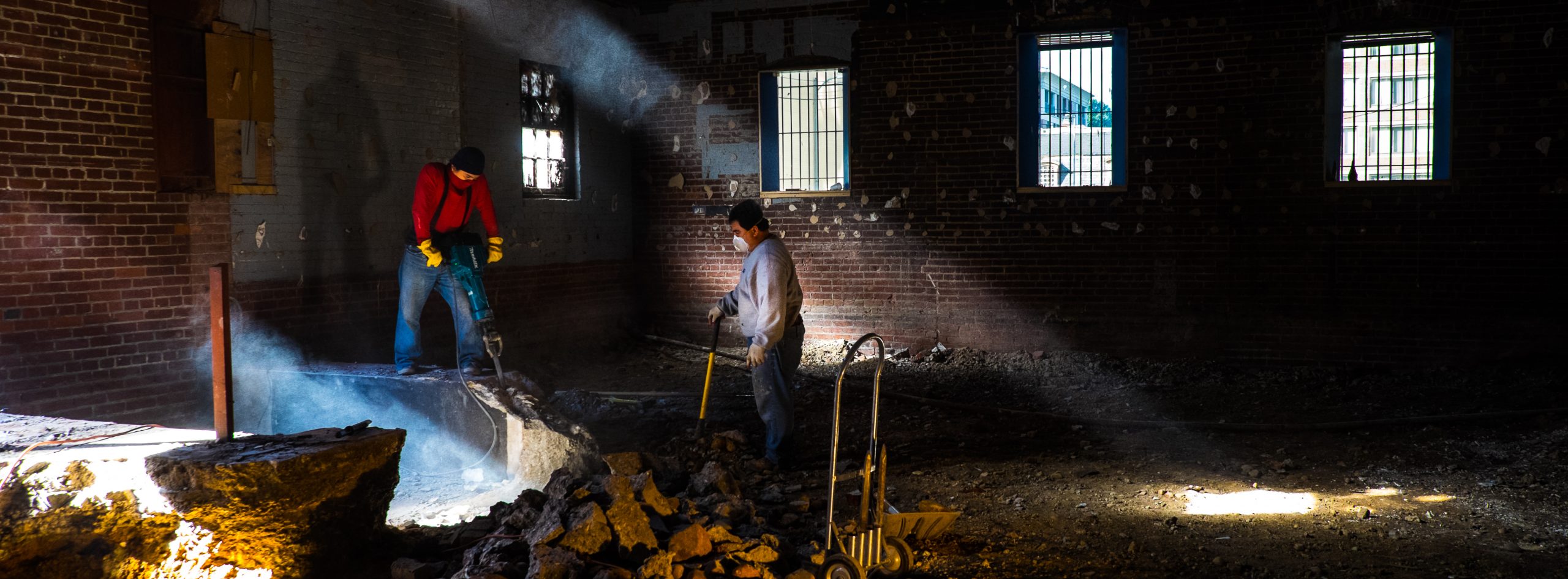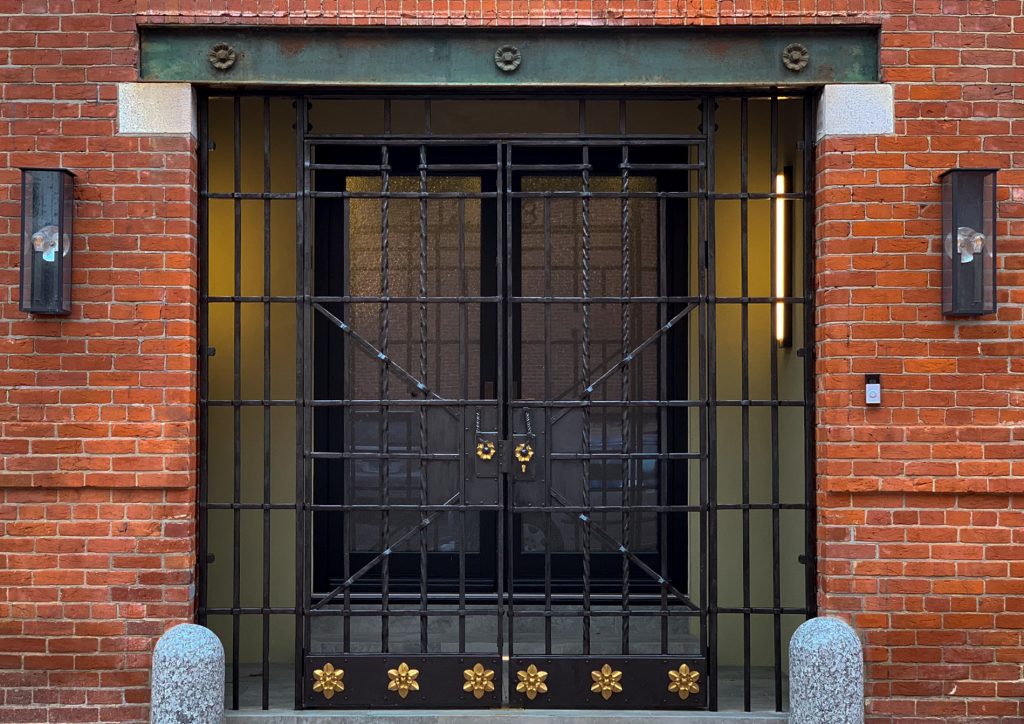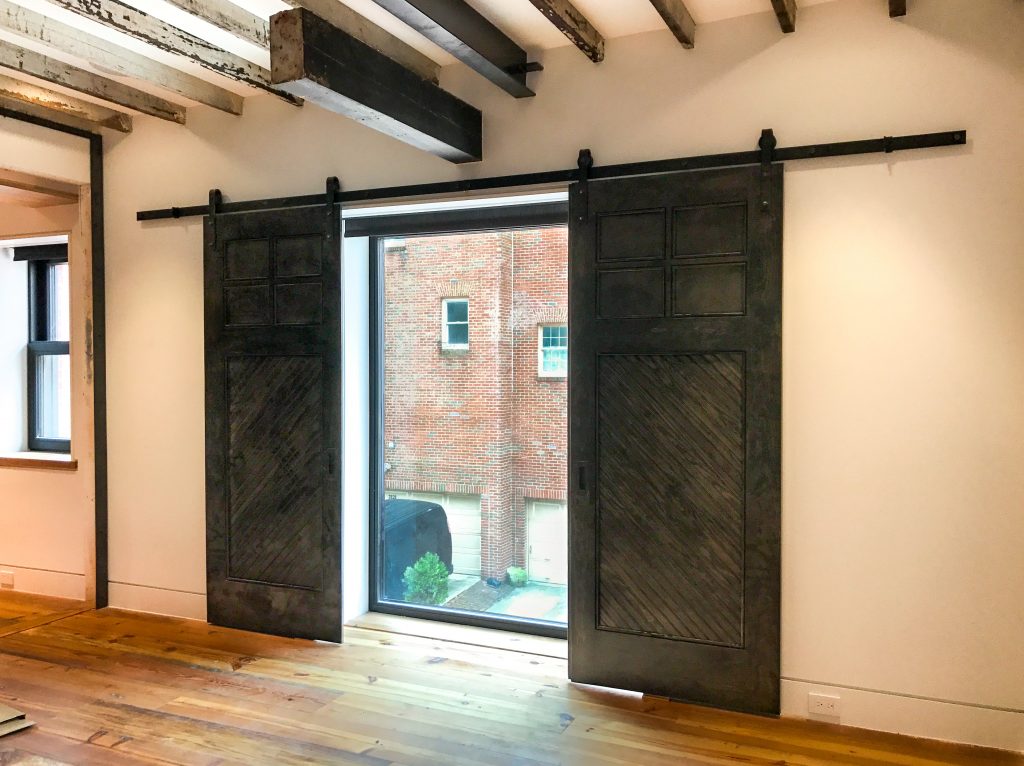
Listed on the National Register of Historic Places, this 1905 structure is one of the last remaining stable/carriage houses built to serve the large mansions in the Dupont Circle area. Originally horses and carriages were housed below, and servants above. Over the last hundred years the building has been used as a garage, a car dealership, a fashionable restaurant, and in its last incarnation, a popular nightclub. When the current owner acquired the building, it lay empty and exposed to rain and weather. No original interior trim or features remained and the original layout had long been abandoned.
The design team at Peabody Architects was challenged by the owners to preserve this D.C. landmark, create a home for aging in place, and achieve as close to net-zero energy use as possible without sacrifice to comfort or lifestyle.
The project achieved every energy metric for Passive House Institute U.S. (PHIUS) certification: heating energy, cooling energy and total energy use. The house is zero-energy ready, with space available on the south roof for the 16.3 kW photovoltaic array that would be required. Current D.C. Historic Preservation Review Board requirements do not allow visible solar arrays on Landmark buildings. While a solar hot water system was allowed on the east façade, a PV array was not.

Exterior masonry was restored according to the Secretary of the Interior’s 1983 Standards. Non-complying openings were removed and original openings restored. The roof was replaced to match the original. Deteriorated copper cupolas were rebuilt to match the originals. They now house the elevator hoistway and all air intake and exhaust vents. Original heart pine roof and floor joists were repurposed into flooring, cabinetry and furnishings. Exterior signage from older incarnations were preserved. The disco ball from the night club adorns the new stairway ceiling

The first floor features guest bedrooms, a small apartment, and utility spaces. A non-conforming shed addition at the east end was replaced to create adequate space for two cars with EV charging. A large entry foyer contains an ornamental stair leading to the second-floor living spaces. A small glass elevator is set just off the foyer.
Upstairs, there is a large open living-dining-kitchen area at the west end and the master suite at its east end. A small separate catering kitchen serves large events.
In the attic, a space was carved out of the north roof (invisible from the alleys) for a small entertaining deck and outdoor kitchen. The deck is accessed by the elevator and small spiral stair.
Project Team
Spencer Carriage House Deep Energy Retrofit (Washington, D.C.)
Architecture Firm: Peabody Architects
Interiors Architect: Yoko Barsky, Deco Design Studio
Photographer: David Peabody
Project manager: Izumi Kitajima, CPHC
Structural engineer: Rossetti Engineering, Fairfax, Va.
General contractor: Ari Fingeroth, Federalist Builders Inc., Washington, D.C.
Masonry: Vaughan Masonry Restoration, Alexandria, Va.
Ornamental Metals: Fred Crist Metalwork, exterior grille work; AK Metal Fabricators, stairs, counters
Cabinetry and millwork: Dovetail Millwork, Rixey, Va.
Roofing: Clerkin Roofing and Sheet Metal, Washington, D.C.
Plumbing: H D Johnson and Sons, Washington, D.C.
HVAC: Michael Bonsby HVAC, Gaithersburg, Md.
Electrical: W&W Electric, Silver Spring, Md.
Solar Thermal: Solar Energy Services, Inc., Millersville, Md.
